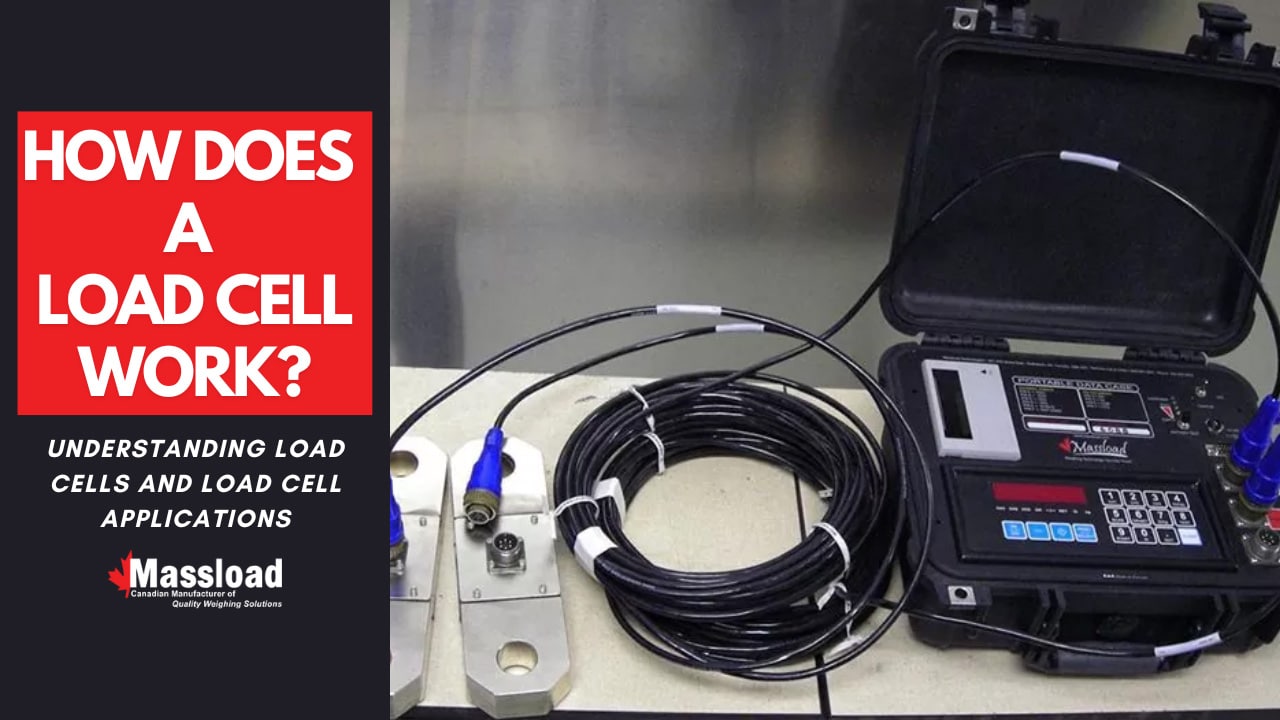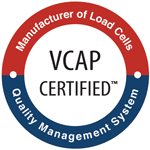
Understanding Load Cells and Their Applications
Load cells are used to measure force, weight or pressure in many industries. This article will explain the principles, construction, and applications. Whether you’re an industry professional or just curious you’ll find out how load cells work and why they are so important in modern technology.
How Load Cells Work
The first step to understanding how load cells work is to take a closer look at the principles of force measurement and the various components of these devices.
Load cells are essential sensor devices designed to measure force, weight, or pressure by converting these forces into electrical signals. The core principle revolves around strain gauges, which detect changes in electrical resistance caused by deformation in a spring metal body.
When a load is applied, it deforms the load cell, changing the electrical resistance of the strain gauges bonded to the metal body. This change is converted into an electrical signal by a Wheatstone bridge circuit, typically arranged with four strain gauges. The resulting voltage signal is amplified and processed, providing an analog or digital output. This process enables precise measurement of load or compression forces.
Load cells are highly accurate due to their configuration and precision in manufacturing but can be influenced by factors like temperature changes. Compensation techniques minimize these effects, ensuring reliable measurement. Load cells are often calibrated and certified by organizations such as the National Type Evaluation Program (NTEP) to meet stringent accuracy standards.
The versatility of load cells makes them essential in numerous applications, from industrial scales to laboratory testing equipment. Different types of load cells cater to specific measurement needs, highlighting their role in modern technology.
Types of Load Cells: Beam Load, Single Point, and More
As mentioned above, many types of load cells exist, (each designed to convert forces like compression, tension, or shear into an electrical signal) and include bending beam load cells, shear beam load cells, single-point load cells, S-type load cells, tension load cells, compression load cells, thru-hole load cells, and load pins. Understanding the characteristics and applications of each type is essential for selecting the appropriate load cell for your needs.
- Shear Beam Load Cells: Single end or double end e.g., ML-0100 vs ML-1200 load cells. Used in scales and industrial applications, shear beam load cells measure strain in a rigid metal body.
- Single Point Load Cells: Measure load at a single point, high accuracy even under off-center loads, ideal for retail and bench scales.
- S-Type Load Cells: Versatile for both tension and compression measurement, bidirectional loads.
- Tension Load Cells: For tensile forces, used in wire rope tension measurement and tensile testing. Tension measurement applications for tension load cells also exist in semi-fixed structures outside of rope applications.
- Compression Load Cells: For compressive forces, used in truck scales, material testing, tank and hopper weighing, platform scales and more.
- Thru-Hole Load Cells: Where the force needs to pass through the center, used in bolt force measurement.
- Load Pins: Specialised for crane and hoist applications, measuring forces on the pin.
Determining Load Cell Quality and Applications
When choosing a load cell you need to consider many factors such as reliability, precision and durability. NTEP certification ensures accuracy for commercial transactions but true quality also includes longevity and robustness. The fundamental principle is to convert mechanical force into an electrical signal through strain gauges so the quality of these components and the metal body is very important.
Key Quality Factors:
- Reliability and Precision: The load cell delivers consistent measurements.
- Environmental Performance: How the load cell performs under different conditions like temperature changes and humidity.
- Materials and Construction: Using high quality materials and design to handle environmental changes.
- Protective Features: Using coatings and enclosures to protect against corrosion and physical damage in harsh environments.
For example, some load cells are known for their quality due to their durability and long life even in harsh environments. Although these load cells are good accuracy wise they may not match the precision of NTEP certified models which are designed for trade accuracy. On the other hand an NTEP certified load cell from a non-reputable manufacturer may meet the accuracy standards but not the durability and long life of a high quality load cell.
Load Cell Applications Across Industries:
- Industrial Weighing Systems: Inventory management and material handling.
- Manufacturing Processes: Incorporated inside machinery to ensure product quality and operational safety.
- Testing Facilities: Measuring material and structure performance and endurance.
- Laboratories: Measuring force in both compression and tension tests to advance science and engineering.
It’s Important To Differentiate Between Two Main Types Of Weighing Applications:
- Legal-for-Trade Applications: These require NTEP or OIML certified load cells for accuracy for commercial transactions like retail scales and packaging.
- Non-Legal-for-Trade Applications: These are industrial and scientific applications where precision and durability is critical like material handling, bulk weighing, research laboratories and manufacturing quality control but no commercial transactions.
Development and In-Application Testing
Continuous performance testing is crucial both during the development and certification phases as well as while in application.
- Development and Certification Testing: During development and certification phase, performance testing including environmental testing is done to ensure load cells are designed to maintain accuracy under various conditions. This includes testing the load cells for temperature changes, humidity levels and mechanical stress to meet industry standards and certifications like NTEP.
- In-Application Testing: Once deployed, load cells are tested regularly to verify their ongoing accuracy and reliability. This ensures they continue to work correctly and give precise measurements even in real world conditions.
Special coatings and enclosures are also tested and applied to protect the load cells from corrosion and physical damage in harsh environments to ensure long life and consistent performance.
Selecting a Load Cell by Capacity
Choosing a load cell requires considering its capacity to get accurate measurements and reliable performance. Load cells come in various capacities to meet different application needs. Analyze your application requirements to determine the right capacity.
For example, an S-type load cell is good for precise tension measurement, Shear beam load cells and single point load cells have different capacity options for different applications. Installation and operating environment also play a big role in choosing a load cell by capacity.
Load Cells in Industrial Scales
Load cells are used in industrial scales to measure weight and force. Single point load cells are good for applications where load measurement is required at a single point, high precision. Beam load cells can handle more load, good for heavy industrial applications.
Accuracy and reliability is key, tension and compression load cells are used based on application requirements. Testing and calibration ensures load cells perform consistently and accurately over time to make industrial scales more reliable.
Contact Us for More Information
For more information or inquiry about load cells and its applications contact Massload Technologies. Our team will provide you with detailed information to help you choose the right load cell for your needs. Understanding load cell technology and its applications is crucial for accurate force measurement in different industries.
Frequently Asked Questions About Load Cells And Their Applications
How Long Does A Load Cell Last?
The life of a load cell depends on its usage and the environment it is in. Generally load cells can last for years even decades if properly maintained and under optimal conditions. Overloading, mechanical damage, water or harsh environmental corrosive condition can shorten its life. Regular maintenance and calibration is required to extend the life of a load cell.
Can You Overload A Load Cell?
Yes, overloading a load cell can cause permanent damage. Load cells are designed to measure specific maximum forces and exceeding the safe overload limit can cause deformation or failure of the strain gauges and other components. Make sure to choose a load cell with the right capacity for your application and do not exceed its rated load limit.
How Do Load Sensors Work?
Load sensors or load cells work by converting mechanical force into electrical signals. They use strain gauges bonded to a metal body. When a force is applied, it deforms the metal body and changes the electrical resistance of the strain gauges. This change is then measured and converted into an electrical signal which can be processed to give accurate force measurements.


